How To Find The Best Destination For Family Vacations
Too many choices, not enough time. That’s the paradox of picking family vacation destinations that everyone will actually love. Here’s how to choose smarter—without losing the magic.
What Actually Makes A Place “Family-Friendly”?
If you've ever arrived somewhere that looks glossy on Instagram and thought, "Oh… this is not for us," you already know: the label "family-friendly" is thrown around loosely. Truly kid-friendly travel spots do a few things exceptionally well:
First

They make logistics easy. You can move around without having to wrestle every block. Public transit is clear. Sidewalks exist. Renting a car doesn't mean deciphering surprise insurance. If you're traveling with car seats, you can find one without having to play detective or pack a suitcase-sized booster.
Second
They offer layered fun. The best places cater to both toddlers and teenagers on the same day. Think interactive museums and skate parks, gentle splash pads, and a legitimate water slide; a scenic train, and ziplining. The best family trips feel like a buffet, not a prix fixe.
Third
They build in recovery. Somewhere to nap that isn’t a car seat. A shaded playground when a meltdown is brewing. Cafés with actual high chairs. When a destination makes your day easier in five small ways, it earns a place on your shortlist of family vacation destinations.
Start With Your Family, Not The Map
A destination can be perfect on paper and wrong for your week. Flip the usual planning order: define your constraints first, then match the world to them.
Ages And Energy
Toddlers need routine, space to roam, and short transitions. Grade-schoolers want hands-on experiences. Teens crave independence and a bit of autonomy. If your crew spans those ranges, your winner is a destination with neighborhoods—micro-zones you can savor without the need for hour-long transfers between them.
Time Budget
"We have six days" is different from "we have six nights." Long-haul flights chew days. If you'll land jet-lagged, budget the first 24 hours just to arrive, rest, sleep, and get oriented.
Cost Reality
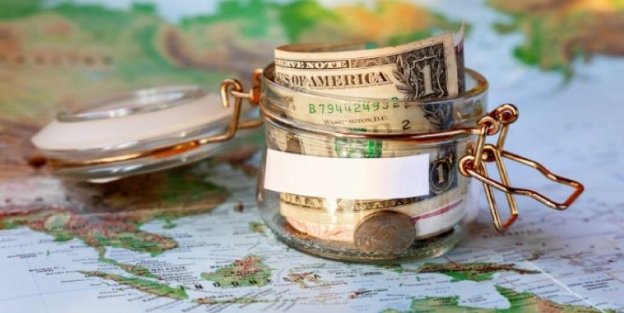
Price isn’t just flights and a room. It’s airport transfers, museum tickets, snacks every 90 minutes, laundry, sunscreen, and the “can we do that, please?” extras. Some kid-friendly travel spots look cheap until you start paying per person, per day, for every attraction. Others (national parks, coastal towns with free beaches, cities with museum passes) give you value without constant swiping.
Meal Style
Picky eaters? Allergies? Your delight in a destination drops if every dinner is a quest. Scan for markets, simple local staples, and at least one fallback (no judgment if that’s pizza).
Your Adults-Only Win
Choose one thing that makes you happy (a great coffee scene, a night market, a coastal walk) and make sure it's easy to do. Parents who refill their own cups travel better.
Once you sketch these guardrails, you'll start to see patterns: certain family vacation destinations seem to fit perfectly.
Time Of Year Changes Everything
The same place can be a gem or a slog depending on the season.
Peak Season
You'll pay more and wait more—but sometimes that's the point. In summer, theme parks run longer hours with full parades; Alpine villages buzz; seaside towns glow late into the evening. If crowds make you anxious, consider midweek arrivals, early entries, and late afternoons.
Shoulder Season

Spring and fall can be the secret sauce for the best family trips—less heat, fewer lines, lower prices. Beaches are gentler, city parks greener, museum lines shorter. Watch school calendars and regional holidays; shifting your dates by three days can halve the chaos.
Off-Season
Deserted beaches can be dreamy or windy and shut. Ski villages in May can be muddy and have scaffolding. Perform a quick weather sanity check (rainy seasons, wildfire warnings, hurricane windows) before committing. One genius move: destinations with “always something” (big cities, indoor/outdoor mixes) forgive weather swings.
The Five Destination Archetypes
Think of the world as a set of archetypes. Match your family to the right shape, and your trip starts planning itself.
Beach Basecamps
Low-friction days: swim, snack, nap, repeat. Prime for toddlers and worn-out parents. Look for calm water, gradual entry beaches, and shade. If your teens get antsy, consider beaches that pair well with activities like surf lessons, coastal biking, or boat trips. Many kid-friendly travel spots on coasts offer simple joy with minimal planning.
City Samplers
Best for curious kids and teens. You get museums that welcome hands-on exploration, neighborhood parks, street food, and transit adventures. The trick is to choose a compact city core and sleep in it—your feet beat Uber surge pricing every time.
Nature & Parks
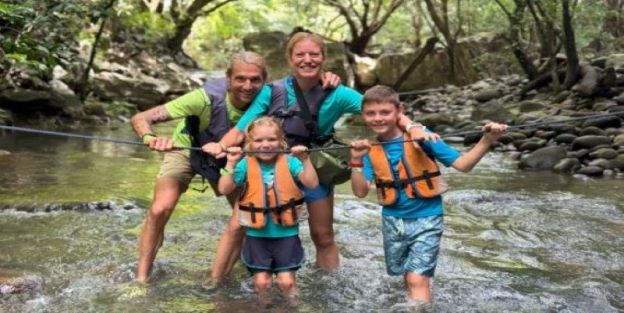
National parks, biosphere reserves, and easily accessible wilderness areas feed everyone. Junior Ranger programs are catnip for grade-schoolers; hikes with actual payoffs (waterfalls, boardwalks, wildlife) keep motivation high.
Theme Park Hubs Orlando
Anaheim, Tokyo Bay. They are engineered to delight—if you plan. Set realistic daily goals, build in pool breaks, and don’t treat “seeing everything” as a moral victory. The best family trips here are balanced, not blitzed.
Culture + Coast Combos
A city-culture starter kit plus a beach decompression zone. Think Barcelona + Costa Brava, Lisbon + Cascais, Sydney + Manly. This hybrid is a cheat code for multi-age groups, offering a choice between "see stuff" and "do nothing."
Use archetypes to narrow your list of family vacation destinations fast. Then you can compare within a type instead of the entire planet.
Domestic Vs. International: The Real Tradeoffs
Staying Closer
Short flights a familiar systems reduce friction. Road trips string small wins: roadside playground, picnic lunch, state park trail, ice cream. If it's your first time taking a baby or toddler, a domestic week with a single home base often beats a heroic itinerary.
Going Abroad
The payoff is cultural lift: new words, new foods, new ways of moving. If the idea of long flights with little kids makes you sweat, start with short international hops—Atlantic Canada, Baja California Sur.
Caribbean islands with direct flights. Consider an overnight flight that lands in the morning, followed by an early check-in and a day of gentle exploration. Many of the world's most kid-friendly travel spots are surprisingly easy once you're on the ground.
How To Build A Shortlist You’ll Actually Use?
Here’s a five-step filter that keeps your list from exploding:
Step 1
The 6-Hour Rule. With little kids, draw a ring around everywhere you can reach in six door-to-door hours (not just flight time). With teens, you can stretch it to eight or ten if the payoff is big.
Step 2
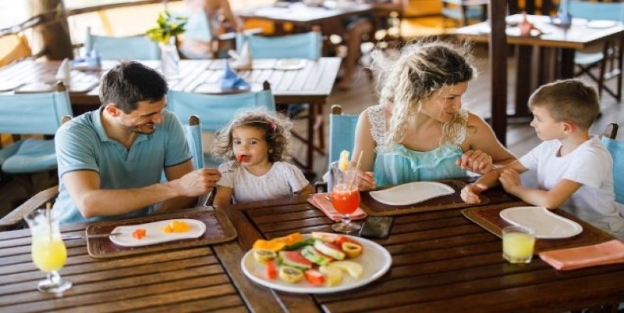
The 15-Minute Life. For each candidate, drop a pin where you’d likely stay and ask: within a 15-minute walk, do we have a playground, a breakfast spot, a market, and a dinner fallback? If “yes,” you’ll travel happier.
Step 3
The Rainy-Day Test. List three indoor options you’d be excited to do. If you’re already struggling at step three, scratch it.
Step 4
The Meal Map. Can you see a week of breakfasts/lunches/dinners that won't become a chore? Scan for grocery stores and look for simple, kid-friendly menus.
Step 5
One Grown-Up Thing. Identify one adult joy you can do without burning the day: a morning run on a waterfront, a live music hour, a walk through a gallery while kids hit a workshop.
Destinations that survive these five checks belong on your shortlist of family vacation destinations.
Sample Shortlists By Age And Style
A few idea-starters to show how the filter works—and to spark your own list.
Under Six Crowd (Routine-Friendly, Low Transfer Friction):
San Diego (zoo + beaches + Balboa Park), Hilton Head (flat bike paths + mellow water), Algarve (coves + cafés + short drives), Vancouver (Stanley Park + seawall + aquabus), Amsterdam (trams + tiny pancakes + NEMO Science).
Grade-Schoolers (Hands-On, Park Time, “Wow” Moments):
Washington, D.C. (free museums + monuments), London (parks + theatre + river), Costa Rica (wildlife + zip lines + hot springs), Utah’s Mighty Five (short hikes + photogenic payoffs), Kyoto & Osaka (temples + food markets + aquarium).
Teens (Independence, Night Vibe, Story-Worthy Adventures):
Tokyo (neon + arcades + day trips), Barcelona (Gaudí + beach + tapas), Iceland (waterfalls + glaciers + lagoons), Paris (museums + markets + bikes), Quebec City (European feel without the jet lag).
Sprinkle options across archetypes so your family can co-vote. That’s how the best family trips begin: a shortlist everyone helped build.
Building An Itinerary That Breathes
A family itinerary is less about “seeing it all” and more about rhythm. Try this structure:
Day 1
Arrive + Orient. Check in, unpack a little, take a neighborhood walk. Playgrounds reset jet-lagged bodies better than screens.
Day 2–3
Anchor Days. Two big anchors (morning, afternoon) and one flex. You’re happier when you can drop one thing without feeling like you “failed.”
Day 4
Recovery + Small Wins. Late wake-up, beach/pool/park, one special food thing. This helps keep kids (and adults) from falling into travel fatigue.
Day 5–6
Signature Days. Signature attraction(s) plus something unexpected (street art walk, market taste test, local sports game).
Day 7
Easy Finish. Return to a favorite, buy the snack you loved, take the photos you missed.
The joy of many kid-friendly travel spots is that they reward lingering; be the family that lingers.
Lodging: The Hidden Lever
Where you sleep drives how your trip feels. Shortlist places that solve for your family’s actual needs:
Space And Doors
Suites with a separate room or apartments with a door allow babies to nap and teens to recharge. Everyone travels better when they get enough sleep.
Kitchens And Laundry
Breakfasts in pajamas are underrated. So is a washing machine when a surprise spill meets your only warm layer.
Location Beats Bells And Whistles
A basic apartment two blocks from a park often beats a fancy resort that requires a shuttle for everything.
Pools With Shade
The afternoon dip is both a carrot and a reset button.
Cribs/blackout/quiet. Ask plainly. Hotels that say “we can try” are different from hotels that say “we’ll have it waiting.”
You’ll often find that centrally located apartments in classic family vacation destinations (think city cores or seaside old towns) give you the best ratio of comfort to cost.
On-The-Ground Transportation (Keep It Simple)
Strollers Vs. Carriers
Compact, lay-flat strollers shine in cities. Carriers shine on old streets with stairs and parks with gravel paths. If you bring both, you carry less in your hands.
Transit Cards
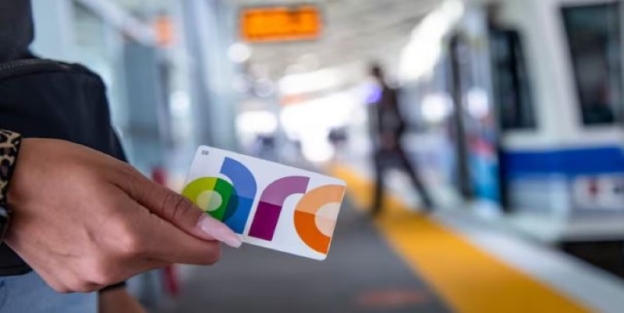
In transit-rich cities, get a day pass and ride like locals. Kids often ride for free or at a discounted rate—some of the world's most kid-friendly travel spots are specifically designed for families.
Car Seats
Laws and standards vary. If you need certainty, bring your own (or a travel booster for older kids). If you rent, call the local branch to confirm stock (and cleanliness).
Driving Abroad
Obtain an International Driving Permit if required, learn the basics of signage, and inquire about tolls. A small car beats a big one in medieval streets.
Walking Radius
The 15-minute life rule again: if you can walk to most things, you'll feel more relaxed.
Food Without Fights
Hungry kids mutiny fast. A few practices keep the peace:
- Front-load days with easy breakfasts. Fruit, yogurt, and toast in-room, where possible.
- Anchor snacks. Build a snack pouch that lives in your day bag (nuts, crackers, squeezable fruit).
- One new thing at a time. Let kids pick a familiar dish; add one “adventure bite.”
- Markets are your friend. Samples, colors, and choices make eating fun (and cheap). In many family vacation destinations, market halls serve as both lunch and a cultural lesson.
- Picnic lunches. Parks are instant dining rooms with wiggle space.
- Water, always. Dehydration is the quiet villain of meltdowns.
Budgeting Without Killing The Fun
Smart planning makes space for spontaneous splurges:
Fly Strategy
If flexible, midweek flights and early-morning departures tend to be cheaper. Set alerts early; when a good fare pops, pounce.
Stay Strategy

Apartments reduce restaurant bills. Week-long stays sometimes unlock discounts. Suburbs can be false economies if you then spend every day commuting.
Passes And Free Days
Museum passes, city cards, and "First Sundays free" programs are available in many kid-friendly travel destinations. Build your big-ticket items around these.
Souvenirs: Pre-negotiate a budget (“one special thing each”) so shops don’t hijack your day.
Insurance: The least glamorous line item, the biggest relief if you need it.
One signature splurge. A boat trip, a cooking class, a zip line, a show. Let it be special—and let the rest be simple.
Common Mistakes That Derail Great Trips
Over-Programming
A four-activity day will test even your patient child. Aim for two anchors and feel virtuous if you make both.
Underestimating Transit
A 30-minute bus ride can be 70 minutes door-to-door with kids. Cluster your days geographically.
Hotel Location Drift
“We’ll save by staying out of town” is risky math. Multiply your daily commute time by seven and see how it feels.
Weather Blindness
The prettiest photos lie by omission. Check the month-by-month pattern. Have a Plan B.
Unclear Priorities
If you don’t say “our number one is beach time,” you may end up doing everything but the beach.
No Buffer
Leave a day open. Something will fill it (or your family will finally slow down).
The best family trips rarely look perfect on paper. They look human—and that’s their genius.
Health, Safety, And Comfort (Quietly Crucial)
Sun, altitude, and water. Reapply sunscreen as if it were a habit. Go slow with altitude. Respect currents and flags.
Medical Basics: Pack a small kit (fever reducer, antihistamines, bandages, and oral rehydration solution). Screenshot or note local urgent care options.
Allergies: Translate your restaurant needs onto a card. Many family vacation destinations have allergy-aware eateries; look for one near your accommodation.
Neurodiversity And Sensory Needs: Look for sensory-friendly museum hours, quiet rooms, and advance ticketing to skip cacophonous lines. Headphones can change a day.
Travel Documents And Consent: Expiration dates sneak up. If one parent travels solo, carry a simple, notarized letter of consent—it’s rarely requested, but you'll be glad you have it if it is.
Teaching Kids To Be Good Guests
Travel is an empathy machine if you let it be.
Local Norms: Demonstrate how to greet, express gratitude, and wait for your turn, the local way. Kids love scripts.
Wildlife Wisdom: View from a respectful distance; don’t feed. Finding a ranger to ask questions turns curiosity into care.
Support Small: One bakery, one artisan, one neighborhood eatery a day. Kids see the person behind the counter; it sticks with them.
Off-Peak Kindness: Visiting popular places early or late spreads your footprint lightly—another gentler way to enjoy kid-friendly travel spots.
Three Mini Travel Plans (So You Can Picture It)
San Diego (7 Days, Under-10 Focus)
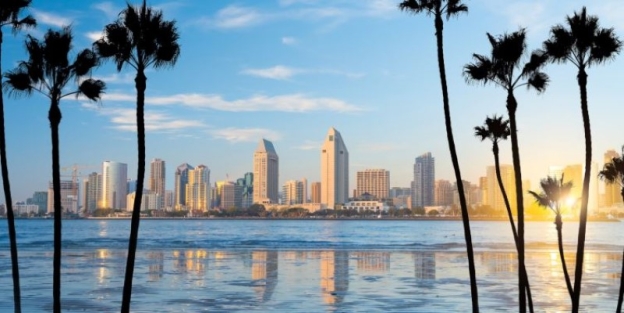
Stay in a beach-adjacent neighborhood, such as Mission Bay or Pacific Beach, for easy access to sand and playground time. Alternate days: San Diego Zoo (select two zones, not all), beach and tidepools at La Jolla, Balboa Park museums (Fleet Science and carousel), LEGOLAND day trip, harbor cruise and Seaport Village, and a "one thing we loved" repeat day. Evenings are spent at taco stands, watching the sunset at the beach, and getting an early start to bed.
London (6 Days, Mixed Ages)
Sleep near a park (Kensington, Regent's). Start with the Natural History Museum and Hyde Park, then take a riverboat to Greenwich. Tower of London on a weekday morning, Borough Market lunch, Sky Garden afternoon. Day trip by train (Windsor or Hampton Court). West End matinee if your crew can handle it. Let kids choose one "lead the day" segment—they'll surprise you.
Costa Rica (8 Days, Adventure Blend)
Split time: Arenal/La Fortuna for volcano views and hot springs; then Manuel Antonio or Guanacaste coast. In Arenal, choose one big outing (such as ziplining or hanging bridges) and one leisurely activity (like a chocolate farm tour or a hot springs soak). On the coast, surf lesson morning, wildlife park afternoon, catamaran sunset day. Build in hammock time daily. You'll remember those slow hours.
These are frameworks, not mandates—the best family trips flex to your crew’s mood and energy.
The Scoring Trick That Ends Debates
When you’re down to three places and everyone has a favorite, use a simple weighted score:
- Assign weights (add to 100): kid fun (30), ease/logistics (25), cost (20), adult joy (15), weather fit (10).
- Score each destination on a scale of 1 to 5 for each category.
Multiply, Add, And See What Wins?
It’s not about math winning the day; it's about surfacing what matters. If your "ease/logistics" weight is high, you'll be happier in cities or compact coasts. If "kid fun" dominates, theme park hubs and kid-friendly travel spots with playgrounds that repeat rise.
Packing Philosophy That Saves Sanity
- Think kits, not piles. A snack kit, a meds kit, a beach kit, a plane kit. Each lives in a pouch. You repack as you go.
- Anchor items. One warm layer per person, one pair of good walking shoes, and one sunhat. Everything else is negotiable.
- Laundry beats luggage. Washing once a week reduces clutter and baggage.
- Souvenir space. Leave a third of a suitcase open. Future-you will thank past-you.
- Stroller bag. Even if you gate-check, a cheap cover protects it from mystery grime.
These small habits matter more than an exhaustive packing list, especially in busy family vacation destinations where you'll spend more time on the go than sitting.
When To Bring Help (And When Not To)
Multigenerational Trips
A grandparent alone can be magic—shared memories, built-in babysitting. Book spaces with privacy and clear "quiet zones" so rhythms can diverge without friction.
Sitters and kids’ clubs
Resorts with credible kids’ clubs buy adults a few hours—vet with other families’ reviews and do a short trial session first. City stays? Ask the hotel concierge for vetted sitter services; book one dinner you’ll actually savor.
Tours With A Twist

Short, family-focused tours (such as street food walks, family bike rides, and wildlife ranger experiences) are low-commitment, high-payoff. The guide is your conversational bridge—and often your gateway to local secrets in kid-friendly travel spots.
What To Do When Things Go Sideways?
They will, a little. A plan for “oops” beats a meltdown.
- Missed nap? Park + popsicle + shade.
- Rain out? Museum + scavenger hunt list you make on your phone.
- Lost item? Make a replacement quest its own mini-adventure.
- Home sick? Video-call a friend back home; kids recalibrate fast.
The best family trips are rarely the most flawless ones. They’re the ones that handled bumps with grace (and snacks).
Choosing The Right Cruise (If You’re Cruise-Curious)
Cruises compress complexity: lodging, meals, activities—done. If you’re considering one, match the ship to your family:
Big Ships
Water slides, ropes courses, teen lounges. Less “cultural immersion,” more “floating amusement park.” Shore days become your local taste.
Mid-Size/River
A slower pace, older-kid-friendly, and port days are the stars. Some river lines now cater to families with cabins that connect, and bikes you can borrow.
Itinerary Beats Logo
A ship you love on a dull route is still dull. Ports with genuine "walk off and do something" options make family vacation destinations in their own right.
Sustainable Choices That Don’t Kill The Joy
Pick time and place wisely. Shoulder-season visits to popular places lighten your footprint and improve your experience.
Choose reef-safe sunscreen and refillable bottles. Many kid-friendly travel spots now have refill stations everywhere.
Animal experiences, done right. Sanctuaries over selfies. Guided viewing over feeding. Children absorb your ethics more quickly than your advice.
Support small. That bakery, the mom-and-pop café, the maker’s shop—you’re why they’re still there next year.
Turning Your Shortlist Into A Booked Trip
You’ve got three strong contenders. Here’s how to cross the finish line without second-guessing:
- Lock dates, then flights. Dates drive price. If you have wiggle room, use it; if you don’t, book early and be done.
- Book sleep next—location-first. A great address can make half your day easier. Filter by "walk score," nearby parks, and grocery access.
- Hold one “signature” and three “solid” activities. Pre-book what sells out. Leave white space for serendipity.
- Make a one-page day map. Addresses, opening hours, transit notes, and a few eateries are highlighted. If your phone dies, you're still fine.
- Tell the kids the story. Show photos, watch a short video, let each kid “claim” one stop they’re excited to lead. Buy-in is behavior’s best friend.
- Pack, then remove 20%. Your future self will applaud.
By the time you’re zipping the last bag, you’ll know why this place—out of all family vacation destinations—was right for your family this year. That confidence is half the magic. The other half is what happens when you arrive: the smells, the sounds, the way your kids point at something unexpected and shout, “Look!”
And that, more than any checklist, is why we travel.
Getting Your Family Trip From Idea To Itinerary
Select an archetype, run the 5-step filter, score your finalists, and make a commitment. The world is full of kid-friendly travel spots, and you don't need the "perfect" choice to make memories—just the right one for your people right now. Plan lightly, leave room for wonder, and let the best family trips unfold one small delight at a time.
Was this helpful? Share your thoughts
- Learned practical methods
- Solved my questions
- Inspired new ideas
-
![Don’t Book A Flight Before You Read This Secret Guide]() Don’t Book A Flight Before You Read This Secret Guide
Don’t Book A Flight Before You Read This Secret Guide -
Searching for flights can be overwhelming. Prices change constantly, hidden fees add up, and sometimes the “cheapest” option isn’t the best deal. The truth is, most travelers end up paying more than they should. This guide breaks down proven strategies and tools that will save you money, help you choose smarter, and make sure you get the most value before booking your next flight.
Explore More
-
![The Best Time To Book Flights To Get The Lowest Price]() The Best Time To Book Flights To Get The Lowest Price
The Best Time To Book Flights To Get The Lowest Price -
Finding cheap flights isn’t just about luck. Airlines follow pricing patterns that reward travelers who know when and how to book. Whether you’re planning a family vacation, a business trip, or a last-minute getaway, knowing the best time to book can save you hundreds of dollars.
Explore More





